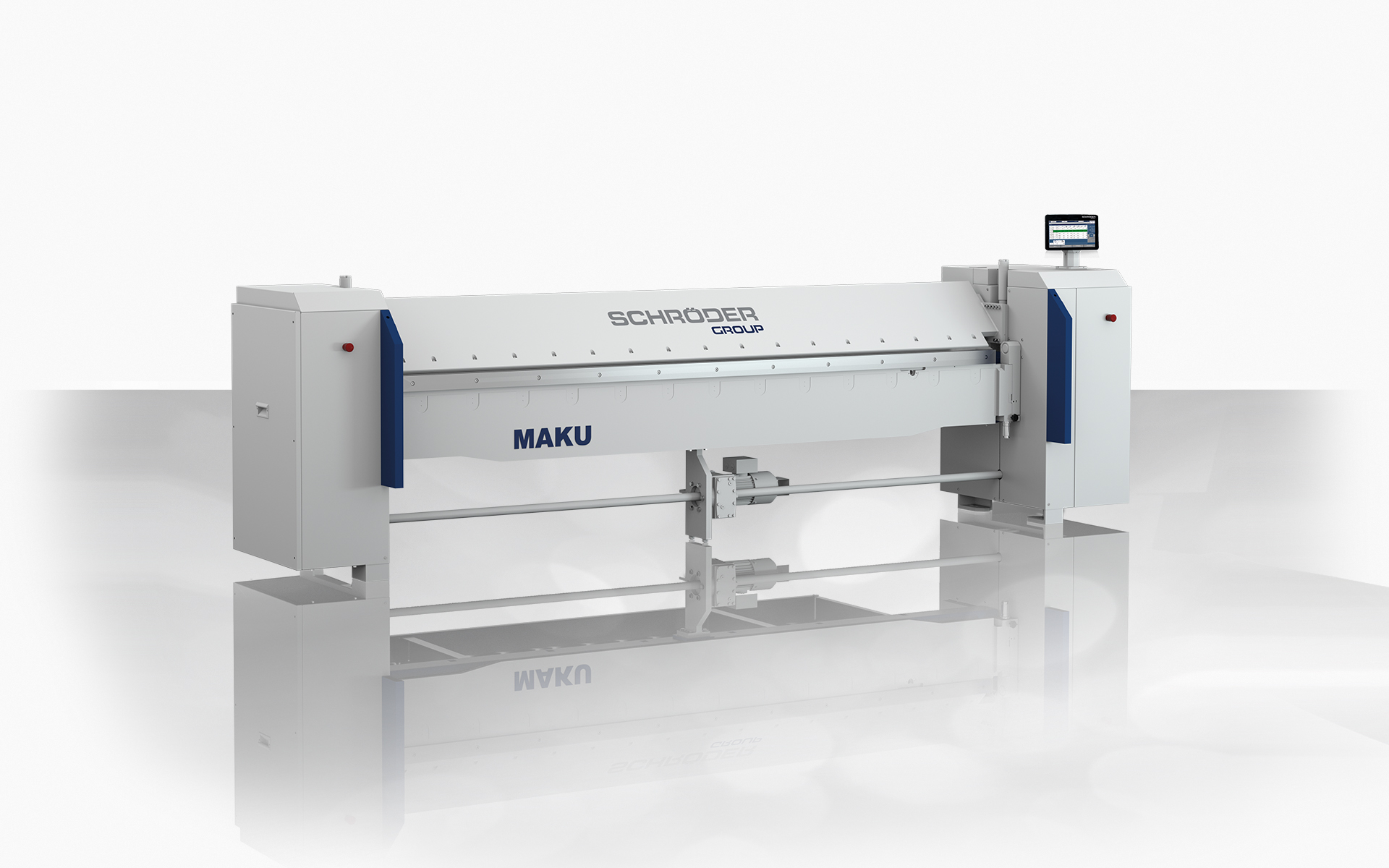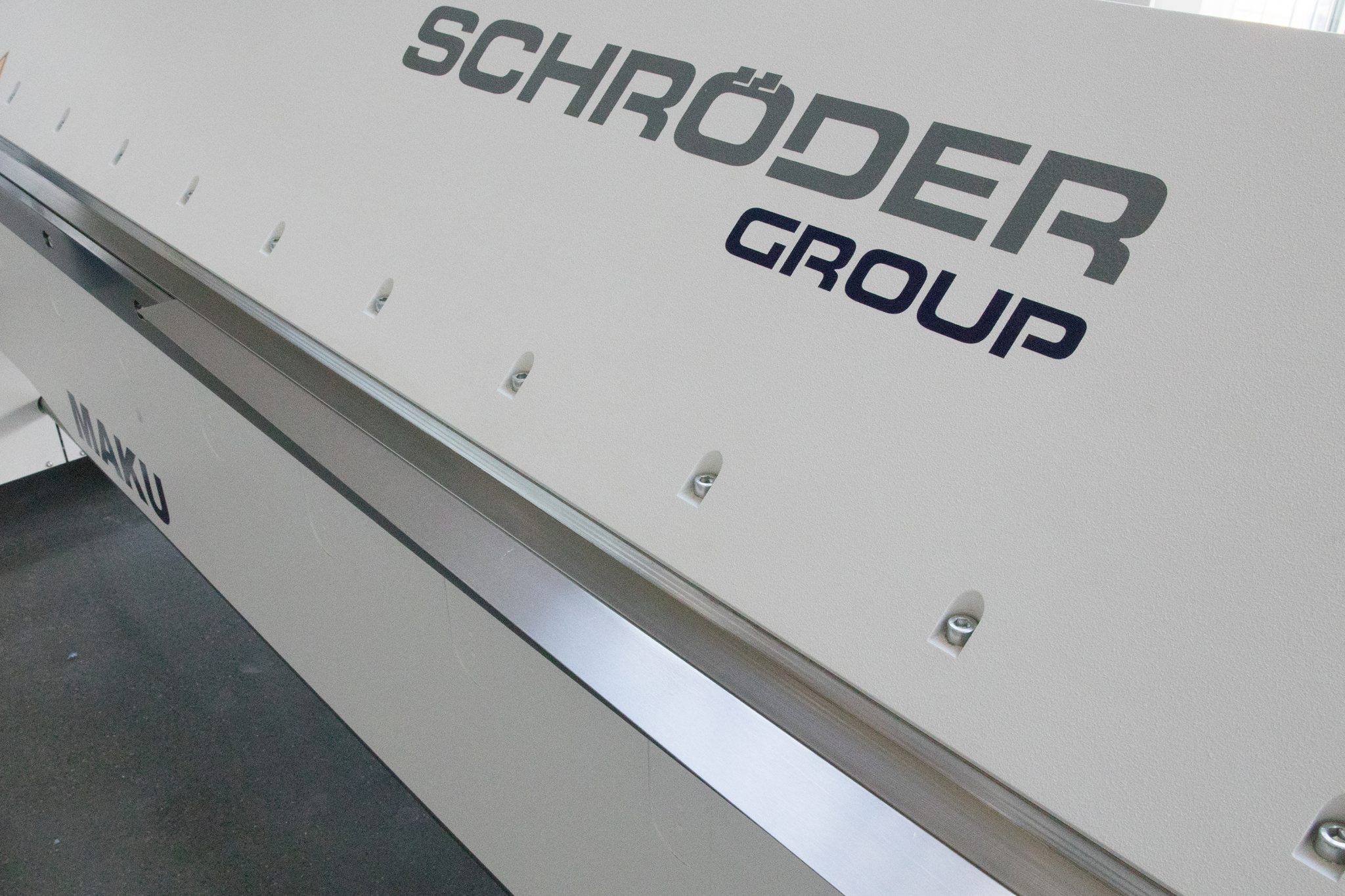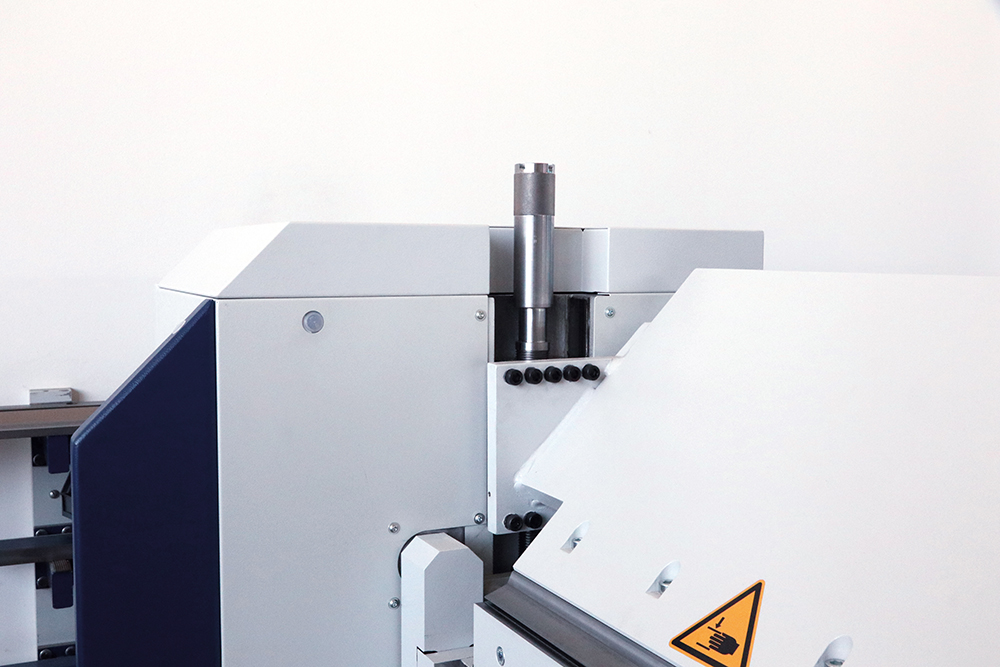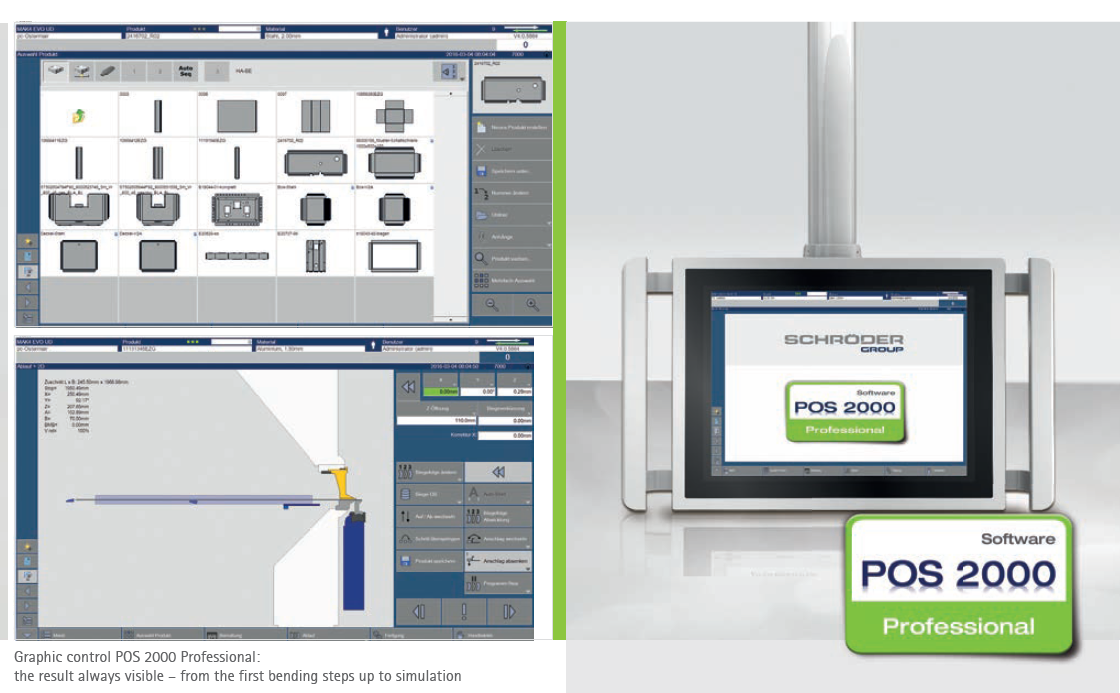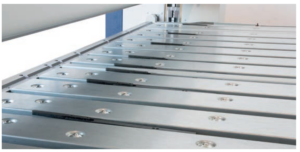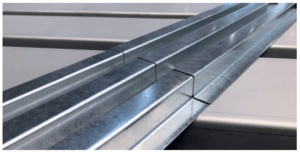The motorized folding machine MAKU is the ideal entry into motorized thin sheet metal processing for up to 2.5 mm thick sheet metal. For plumbers and repair workshops, this type of machine represents a very versatile solution—the U in its name stands for „universal. ” No other machine on the market offers so many clearances. It is the first machine in the world with a two-axis back gauge for automatic conical bending.
Details
Standard configuration:
Software control
- New Classic Bend with touchscreen turntable on switch cabinet
- Positioning control Classic Bend with 10,1“ touchscreen turntable on switch cabinet
- Radius function
Clamping beam
- 45° clamping beam with a clearance of 65 mm on the rear
- Drive: middle motor 0.75 kW
- Clamping beam stroke: 150 mm
- Clamping pressure adjustment via handwheel (without tools)
- Clamping beam tools: Tinsmith blade or optionally sharp nose blade 20°, ca. 700 N/mm², directly screwed to clamping beam
Folding beam
- Drive: 1.5 kW (converter-controlled)
- Manual adjustment: 30 mm
- Folding blades 10 mm and 25 mm (from MAKU 3200: 15 mm and 25 mm); 700 N/mm²
Bottom beam
- 45° bottom beam with a clearance of 54 mm on the rear
- Bottom beam blade, one-piece, 8 mm lowered, ca. 700 N/mm², from 30 mm: 8 mm lowered, depending on the chosen gauge
– without finger grooves
– with finger grooves 6 mm or optionally 10 mm
Others
- Footswitch
- Anchor plates, incl. dowels

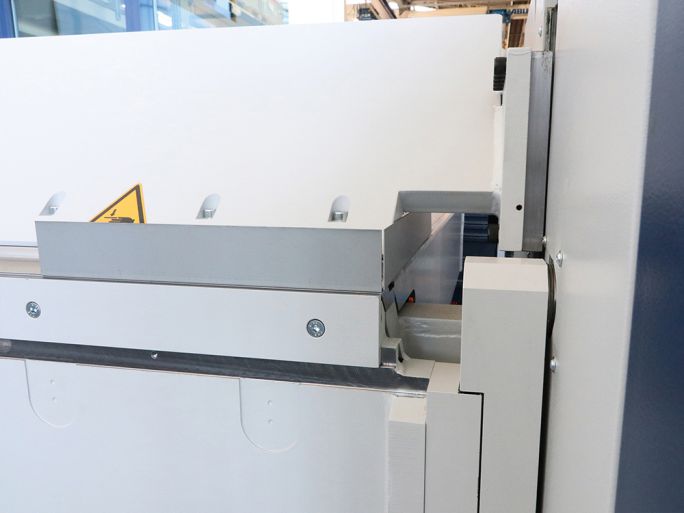
Tools/Options
Optional equipment includes:
Software control:
- POS 2000 Professional graphic control on swivelling arm
Clamping beam
- Clamping beam package: one-stage clamping beam drive for 130 mm tool height incl. clamping and adapter rail (clamping rail from standard configuration dropped)
- Clamping beam tools:
- Sharp nose blade/tinsmith blade hardened ca. 1100 N/mm² (recommended for stainless steel applications)
- Goat’s foot blade for clamping rail, H = 130 mm, 30° sharp, R 1/1,5/3; free space 110 mm, clearance 30 mm, foot width 50 mm, segmented incl. corner parts, hardened ca. 1100 N/mm²
Folding beam
- The folding beam was moved to the back incl. cranked folding blades 10 and 25 mm (from machine length 3200 mm: 15 and 25 mm), not in combination with the crowning device; folding blades from standard configuration are dropped
- Crowning device for folding beam, manual central crowning device (not in combination with cranked folding blade)
Bottom beam
- Bottom beam blade without gradation with or without finger grooves
Safety and others
- 2-man-operation
- Foot switch on the rail for lateral movement
- Tool cart for blades and segmented tools
- Guide rail
- Cutting device for max. sheet thickness 0,8 mm St37
Back gauge and table
- Sheet support table 1000 mm (without gauge)
- Gauge package Classic Bend or POS 2000 Professional
- Back gauge, motorized 6 – 1000 mm, optionally 10 – 1000 mm
- removable sheet support plates
- All drives converter-controlled
- Sheet support table with ball rollers
- Gauge with spring fingers, bottom beam blade without finger grooves
- Pneumatically lowerable gauge fingers
- Gauge 1500 mm with two gauge sectors incl. pneumatically lowerable gauge fingers
- Two gauge fingers for conical bending, adjustment range 5 mm, optionally pneumatically lowerable
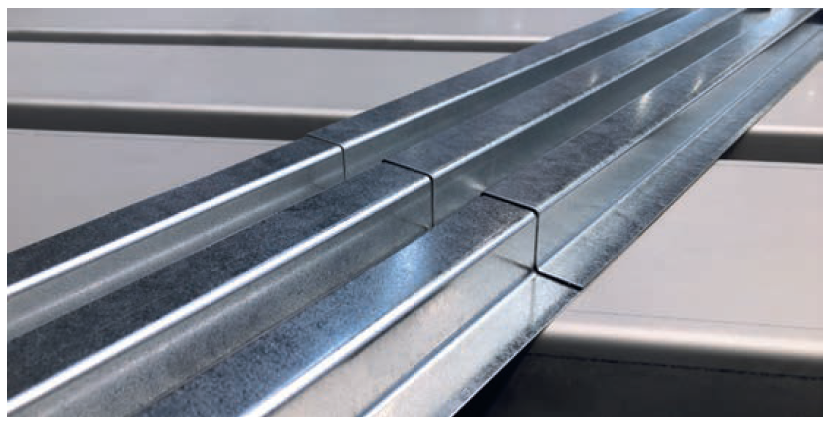

Tools/Options
Optional equipment includes:
Software control:
- POS 2000 Professional graphic control on swivelling arm
Clamping beam
- Clamping beam package: one-stage clamping beam drive for 130 mm tool height incl. clamping and adapter rail (clamping rail from standard configuration dropped)
- Clamping beam tools:
- Sharp nose blade/tinsmith blade hardened ca. 1100 N/mm² (recommended for stainless steel applications)
- Goat’s foot blade for clamping rail, H = 130 mm, 30° sharp, R 1/1,5/3; free space 110 mm, clearance 30 mm, foot width 50 mm, segmented incl. corner parts, hardened ca. 1100 N/mm²
Folding beam
- The folding beam was moved to the back incl. cranked folding blades 10 and 25 mm (from machine length 3200 mm: 15 and 25 mm), not in combination with the crowning device; folding blades from standard configuration are dropped
- Crowning device for folding beam, manual central crowning device (not in combination with cranked folding blade)
Bottom beam
- Bottom beam blade without gradation with or without finger grooves
Safety and others
- 2-man-operation
- Foot switch on the rail for lateral movement
- Tool cart for blades and segmented tools
- Guide rail
- Cutting device for max. sheet thickness 0,8 mm St37
Back gauge and table
- Sheet support table 1000 mm (without gauge)
- Gauge package Classic Bend or POS 2000 Professional
- Back gauge, motorized 6 – 1000 mm, optionally 10 – 1000 mm
- removable sheet support plates
- All drives converter-controlled
- Sheet support table with ball rollers
- Gauge with spring fingers, bottom beam blade without finger grooves
- Pneumatically lowerable gauge fingers
- Gauge 1500 mm with two gauge sectors incl. pneumatically lowerable gauge fingers
- Two gauge fingers for conical bending, adjustment range 5 mm, optionally pneumatically lowerable
Software
nanoTouch
The most clearly laid-out alphanumeric control
A software invention from Schröder Group and perfect for a workshop and factory application, nano Touch is a modern alphanumeric control that
serves as an optional software for the folding machine MAKU.
“nano Touch” controls the clamping beam and the folding beam using a path measurement of the system, and the motorized backstop is controlled via the digitally controlled frequency inverter. The user interface is clearly laid out and combines easy-to-understand icons with text and numerical displays.
POS 2000 Professional
The standard for industrial folding machines
The proven POS 2000 Professional makes programming a folding machine fast and comfortable. The desired program components can be selected from a
comprehensive and expandable catalogue, the angle and side dimensions are easily changed by pressing the monitor.
The control software displays exactly what the machine is doing: The folding machine, workpiece, and tool are shown schematically and updated for every bending step. Anyone who programs preparation of the work away from the machine can test the quality of their program using the bending simulation, which effectively avoids waste and delays during production.
The software not only controls the machine but also offers assistance to the user: all of the necessary operator activities, like turning, rotating, etc., are
displayed for each bending step.
Technical Data
Success Stories



